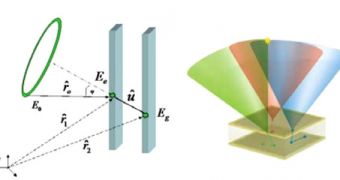Geiger Muller counters are the most widely-used radiation-measuring devices in the world today, yet they do have their limitations. A newly-developed device promises to finally replace the limited counters, and provide more details of particles making up radiation than ever before.
Researchers announce the development of a portable camera of sorts, which has the amazing capability of reconstructing the trajectories that nuclear particles had before slamming into it.
This ability is bound to make it beloved by all counter-terrorism departments in the world. Regular detectors capable of doing this are the size of particle accelerators, and therefore unfit for practical applications in the field.
The reason why Geiger counters need to be replaced is because they cannot detect what type of radiation particles set it off, or where it came from. This becomes easier to comprehend once you get the basic principle on which such a device operates.
If you take the counter apart, you will find a small, gas-filled chamber. When high-energy particles (radiation) make their way into the chamber, they ionize the gas, as in give it a positive charge.
This phenomenon produces a shower of negatively-charged electrons, which are picked up by a pair of conductive plates that make the generator produce the “clicks” its users have become accustomed to.
Experts at the Greek Atomic Energy Commission in Athens, led by Kostas Karafasoulis, say that the new camera, called COCAE, is the product of a European research initiative. The goal of the research was the development of a device capable of imaging sources of nuclear radiation.
Inside the new camera lies a stack of ten pixelated cadmium telluride crystals, each which is 4 by 4 centimeters. The crystals are placed about 10 centimeters apart from each other. When a particle hits the camera, it will naturally hit several crystals at first, allowing experts to detect its direction of origin.
But this may not work in the case of high-energy radiation such as X rays or gamma rays due to the effects of a phenomenon called Compton scattering. When a particle of this type strikes an electron, both of them speed up in different directions, like snooker balls.
The COCAE compensates for this by using the matrix of cadmium telluride crystals to measure the position and energy of the liberated electron. This will allow experts to find out the energy of the original radiation, as well as the direction it came from.
At this point, the device is still mostly theoretical, and highly experimental, but the Greek investigators say that they have already begun work on constructing a COCAE detector camera, Technology Review reports.

 14 DAY TRIAL //
14 DAY TRIAL //